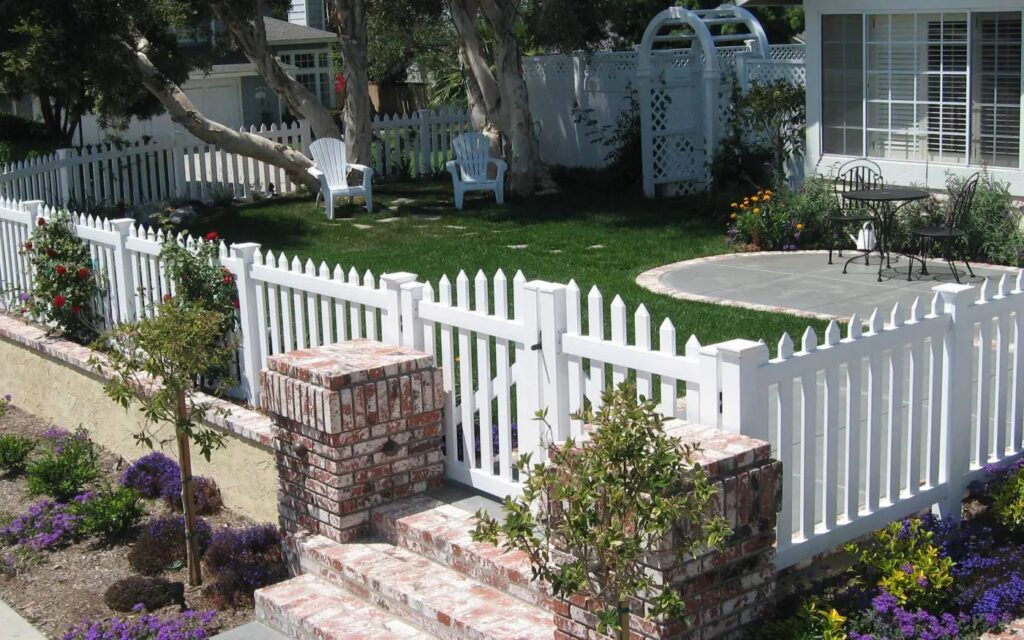Fencing is a crucial aspect of home security and privacy, and it is important to ensure that it is installed properly and effectively. However, the cost of fencing can be a significant factor for homeowners, and it is essential to understand the different factors that can influence the cost of fencing quotes.
One of the primary factors that can influence the cost of fencing is the type of material used. Wood, vinyl, aluminum, and chain-link are some of the most common materials used for fencing, and each has its own unique set of advantages and disadvantages. Generally, wood is the most affordable option, while vinyl and aluminum tend to be more expensive. Chain-link fencing is often the most cost-effective option, but it may not be as aesthetically pleasing as other materials.
Another factor that can influence the cost of fencing quotes is the size of the area that needs to be fenced. The longer and wider the area, the more material and labor will be required, and this will increase the overall cost of the project. Additionally, the terrain and any obstacles on the property, such as trees or rocks, can impact the cost of fencing as well.
Labor costs are also a significant factor when it comes to fencing quotes. The cost of labor can vary depending on the location, as well as the experience and expertise of the fencing contractors. It is crucial to work with reputable and experienced fencing contractors who will provide an accurate and detailed quote for the project.
The overall cost of fencing quotes can also depend on any additional features or customizations that are included in the project. For example, adding gates or decorative elements to the fence can increase the cost of the project.
The cost of fencing quotes can vary widely depending on a range of factors, including the type of material used, the size of the area to be fenced, labor costs, and any additional features or customizations. It is essential to work with reputable and experienced fencing contractors to ensure that the project is completed effectively and within budget.

Cost of 200 Feet of Fencing
The cost for installing 200 ft of fencing can vary depending on various factors such as the type of material used, labor costs, and any additional features such as gates or decorative elements. On average, the cost to install a fence ranges from $5 to $15 per linear foot for labor costs alone. Therefore, for 200 ft of fencing, you can expect to pay anywhere from $1,000 to $3,000 for labor alone. However, it is important to keep in mind that the cost may increase depending on the type of material used. For example, wood fencing may cost less than vinyl or metal fencing, but may require more maintenance in the long run. It is recommended to get quotes from several contractors to get an accurate estimate for your specific fencing project.
The Most Cost-Effective Fence Installation
When it comes to installing a fence, the cheapest option available is PVC fencing. PVC, or polyvinyl chloride, is a type of plastic material that is lightweight, easy to install, and requires minimal maintenance. Unlike traditional wood or metal fences, PVC fences do not rot, rust, or corrode, making them an excellent long-term investment.
One of the main advantages of PVC fencing is that it can be easily customized to fit your specific needs. PVC pickets and stakes can be cut to any size, shape, or color, allowing you to create a fence that perfectly matches your home’s style and aesthetic. Additionally, PVC sleeves can be used to reinforce wooden posts, which can significantly reduce the cost of materials and labor.
If you’re looking for an affordable and durable fencing option, PVC is an excellent choice. With its low maintenance requirements and long-lasting durability, a PVC fence can provide you with years of protection and privacy without breaking the bank.
The High Cost of Fencing in the Present Day
Fencing has become more expensive due to a combination of factors. Firstly, there has been a surge in demand for fences from homeowners since the COVID-19 outbreak, as more people are spending time at home and are looking to improve their living spaces. This increased demand has put pressure on fencing companies, leading to longer wait times and higher prices.
Secondly, the shortage of lumber and other materials has also contributed to the rise in fencing prices. The pandemic has disrupted supply chains and caused delays in the production and transportation of materials, leading to shortages and higher costs for businesses.
Additionally, the cost of labor has also gone up in recent years, which has further added to the overall cost of fence installation. This is due to a combination of factors, such as a shortage of skilled labor, increases in minimum wage rates, and rising healthcare costs.
The high demand for fences, combined with the shortage of materials and increased labor costs, has resulted in higher prices for fence installation.
Conclusion
Fencing quotes can vary greatly depending on a number of factors, including the type of materials used, the length of the fence, and the cost of labor. It’s important to do your research and get multiple quotes from reputable fencing contractors in order to get the best price for your project. While PVC fencing may be the cheapest option, it’s important to consider the durability and longevity of the fence, as well as its overall aesthetic appeal. With the current shortage of materials and increased demand for fencing, it’s also important to be prepared for longer wait times and potentially higher costs. By weighing the pros and cons of different fencing options and doing your due diligence in selecting a contractor, you can ensure that you get a fence that meets your needs and fits within your budget.












